A Complete Guide to Summer Festivals in Japan
During the summer we lived in Japan we decided we were going to be REALLY ambitious and attempt to visit as many summer festivals in Japan as we could. Summer matsuri (or festivals) are extremely popular and each one has a rich history steeped in tradition. Some even date back thousands of years! Here’s what you need to know including dates, locations, street food to try, and what to expect from each of these summer festivals in Japan.
Tips for Attending Summer Festivals in Japan
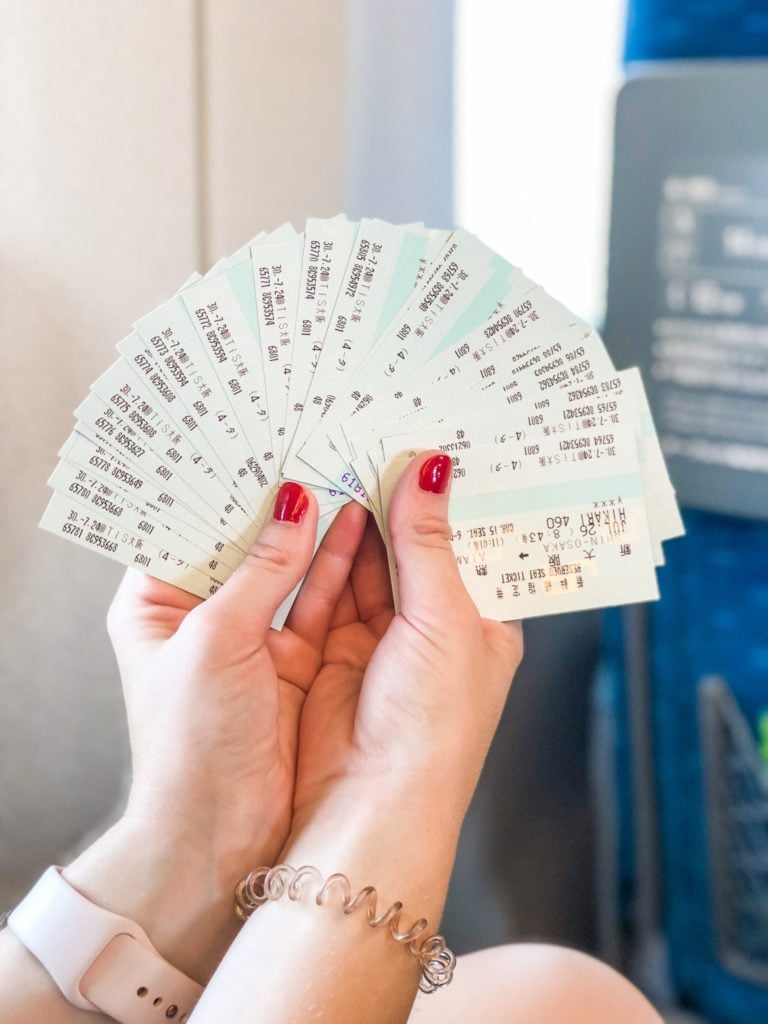
When attending a summer festival in Japan there are some important factors to keep in mind for ALL festivals. I will also cover tips that are unique to specific festivals but for now, I’m sticking to the general tips!
1. Make sure you book your hotel FAR in advance.
For every summer matsuri that we attended, we booked our hotels 4 months to even 8 months in advance. Even then, in some circumstances, we still had a few struggles.
In our experience, Nagaoka Hanabi Matsuri, Akita Kanto Matsuri, and Aomori Nebuta Matsuri were the three summer festivals that we found most difficult to find lodging – most hotels were booked A YEAR in advance.
For these particular festivals, we had to get some hotels or Airbnb an hour away by train. As you can imagine, the trains also are very busy during these festivals so if you want to maximize your stay and visit these festivals with less stress I would consider booking in advance. If you aren’t sure about the dates then try to book a refundable room!
2. In addition to hotels, book your Shinkansen (bullet train) tickets in advance too!
If you are traveling by bullet train you’ll want to make sure you get your train tickets ahead of time so you can have an assigned seat on the train or at least standing room. Many of these festivals entertain millions of people so the trains get VERY crowded. If you plan to use a JR Pass consider getting a Green Car Pass because it will give you more options – Green Car, Regular Car, and Non-Reserved.
3. Ensure you bring a backpack with some necessary items.
Summer in Japan is humid and hot, like MELTING hot and the festivals can bring long days. I highly recommend carrying a backpack that has a few essential survival items for summer matsuri including water, snacks, cooling towels, a foldable fan, bandages, and sunscreen.
4. Wear a yukata (summer kimono) for added festivity.
Especially at festivals like Gion Matsuri, Tenjin Matsuri, and Sendai Tanabata, you’ll see many people wearing yukata, a lightweight cotton kimono that is worn during summer.
There are shops in each of these festival cities that rent out Yukata for men and women – just make sure you reserve in advance. Other options are to purchase them or if you are staying in a ryokan (traditional Japanese inn) then they may have yukata to borrow for your stay.
5. When offered, take the specialty event fans.
Each one of these summer festivals in Japan we went to had a fan that was designed for the festival! It’s a free and neat souvenir to take home with you and it helps a lot to use it during those hot summer days!
Traditional Japanese Summer Festival Games
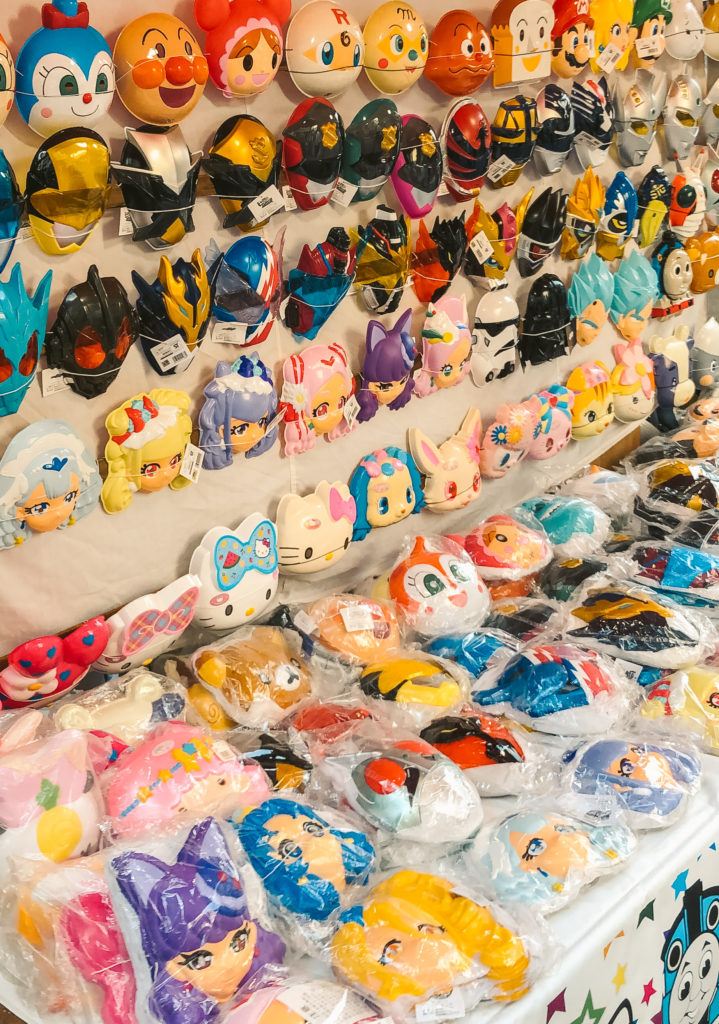
Although the best part of summer festivals in Japan is the experience, the food and carnival games are high on the list too! Streets are lined with vendors selling inexpensive festival foods, drinks, and simple novelty games.
One style of festival game is sukui where you scoop up different prizes with a wand made of washi paper. You continue to scoop up prizes until the paper breaks! Some of these prizes include rubber bouncy balls, small toys, or goldfish. I actually saw an NHK TV special about summer matsuri where a girl in Tokyo caught a goldfish during a sukui game and at the time of filming the special, it was still alive at 13 years old!
Another game you can play at Japanese summer festivals is senbonbiki. Senbonbiki is a luck-based game where you select a string and pull. Attached to the other side are prizes and snacks that you get to keep. There is also a shooting game where you shoot a cork “bullet” out of a fake rifle toward a prize – if you hit it, you get to keep the prize.
Japanese Summer Festival Street Foods to Try
Festival food has a few dishes that you can typically order in restaurants but a number of snacks and foods to enjoy that aren’t commonly found in restaurants and are special to the summer festivals.
Yakisoba (焼きそば)
Yakisoba is a dish made of stir-fried soba noodles typically containing pork, cabbage, carrots, and other vegetables that are flavored with a savory sauce and topped with pickled ginger. It is one of the most popular festival foods by far!
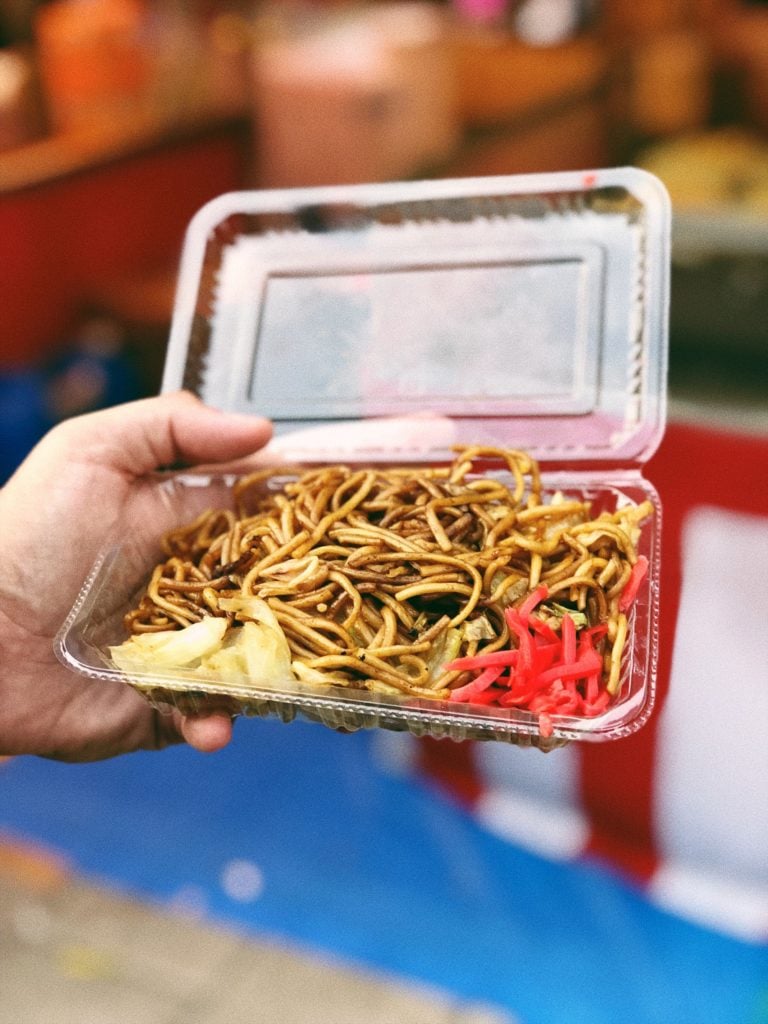
Corn Dog (コーンドッグ)
Corn dogs at Japanese summer festivals are different from the American corn dogs you might be thinking of. First made popular in Korea, these are made with a similar batter but instead of corn, rice flour is used and they come in a variety of ways. Some have half of a hot dog on the bottom and a cheese stick on top. It is then fried in the dough and covered in sugar to make it a salty and sweet combination!
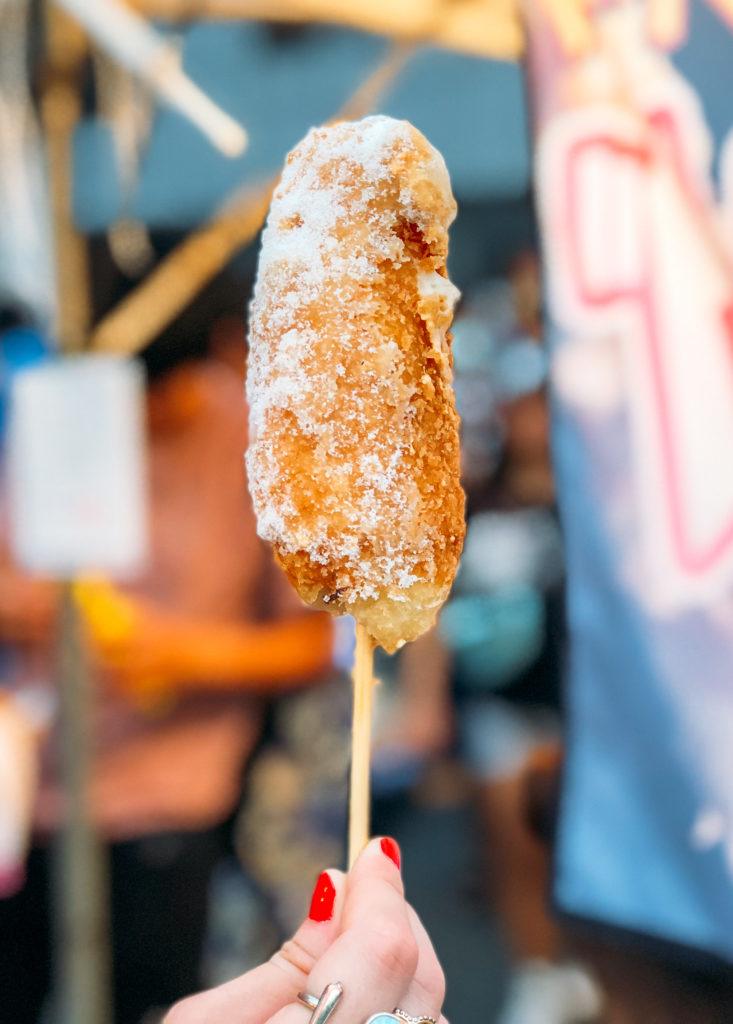
Yakitori (焼き鳥)
Yakitori translates to “grilled chicken.” Yakitori can be a number of different parts of the chicken but the kind you’ll find most often at summer festivals is chicken thigh and occasionally chicken breast. The pieces are cut into bite-size chunks covered in a sauce and grilled over charcoal.
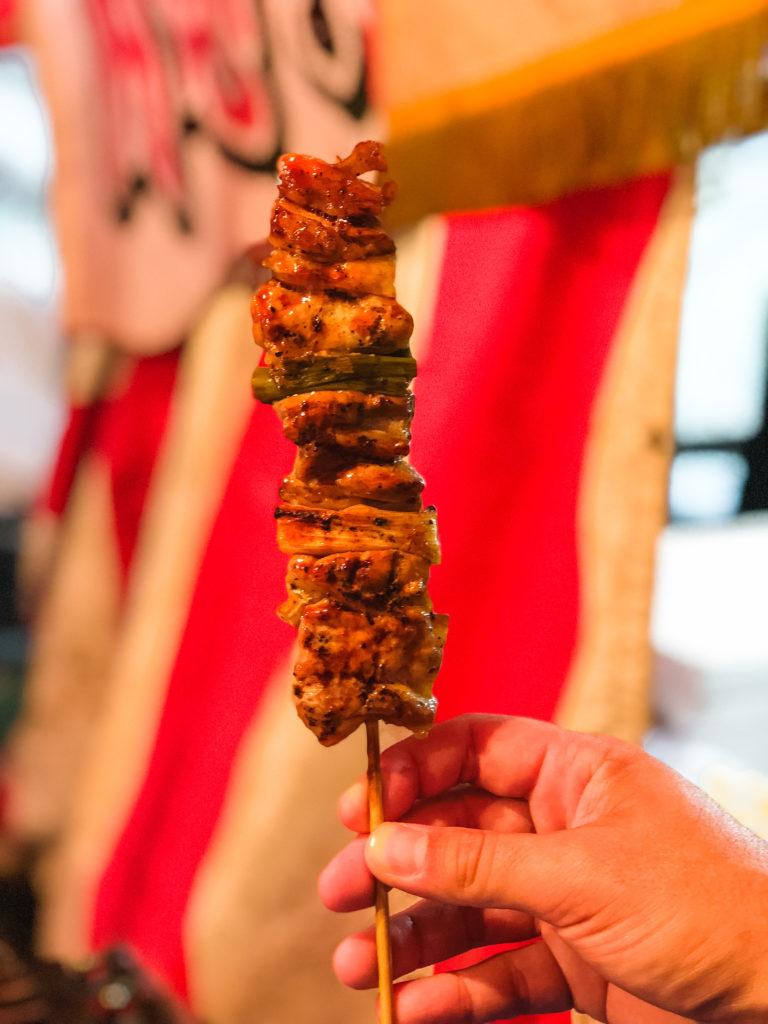
Karaage (唐揚げ)
On the other hand, another chicken dish is karaage. Karaage is bite-sized portions of fried chicken. Don’t ask me why but, while delicious at any time, karaage is even better when you’re visiting a summer festival in Japan!
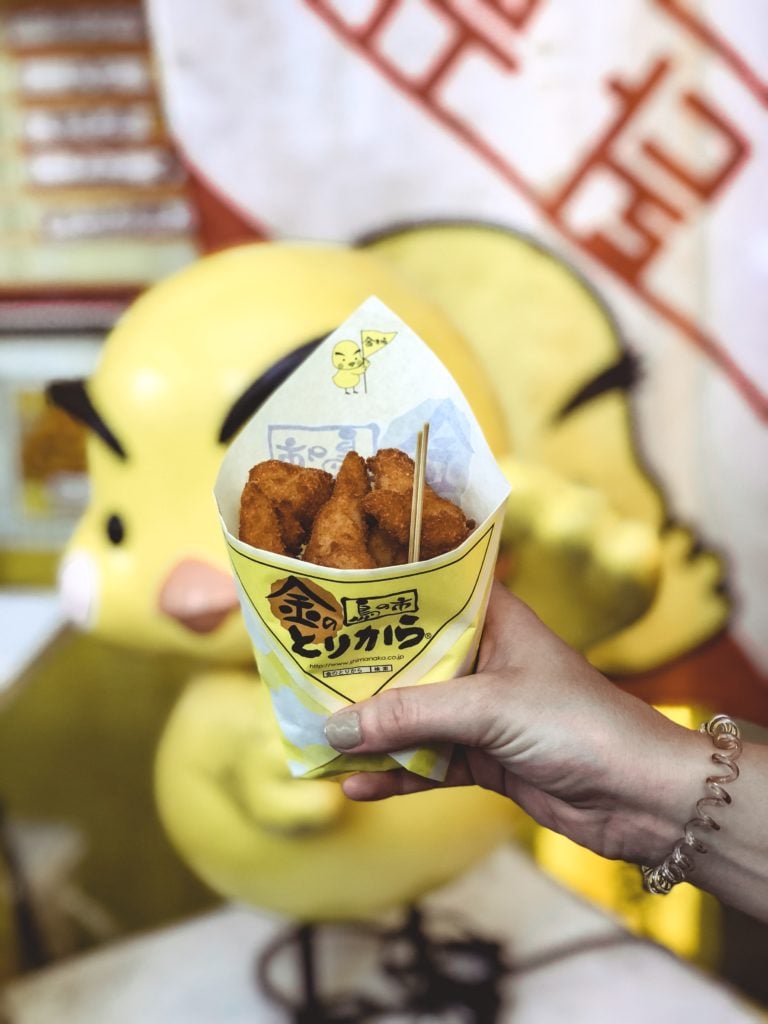
Tornado Potato (トルネードポテト)
A tornado potato is a single potato that is sliced in a spiral, deep-fried, and served perfectly crispy and piping hot. This Japanese summer festival food is typically eaten with ketchup or other condiments.

Tamasen (たません)
Tamasen is a GIANT shrimp-flavored cracker that is often topped with a sauce (like okonomiyaki sauce), tempura bits, and mayonnaise. Sometimes there are other toppings like pork belly, egg, or other proteins too.
Crispy Cheese (カリカリチーズ)
We didn’t see this summer festival food as often, but although simple, it was really good! It’s cheese wrapped in a thin gyoza wrapper and fried. Basically a mozzarella stick but with a gyoza wrapper!
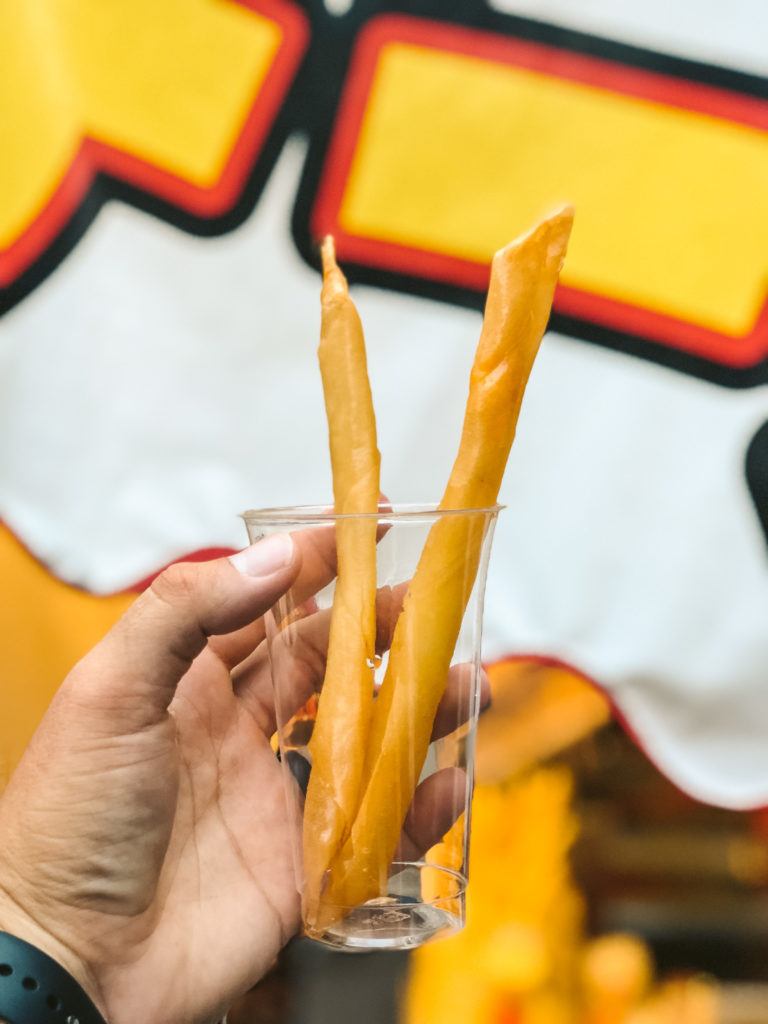
Specialty Beer (ビール)
While most of the beers at summer festivals can be found normally, there are often specialty beer cans for each festival which is kind of fun to see!

Kakigori (かき氷)
Kakigori is Japanese shave ice. It is made by shaving thin slices of crystal-clear ice. These shavings are added to a bowl with a flavoring syrup that is usually made from fruit or tea – strawberry being one of the most popular flavors. It melts in your mouth like ice cream and is perfect for those hot summer days.
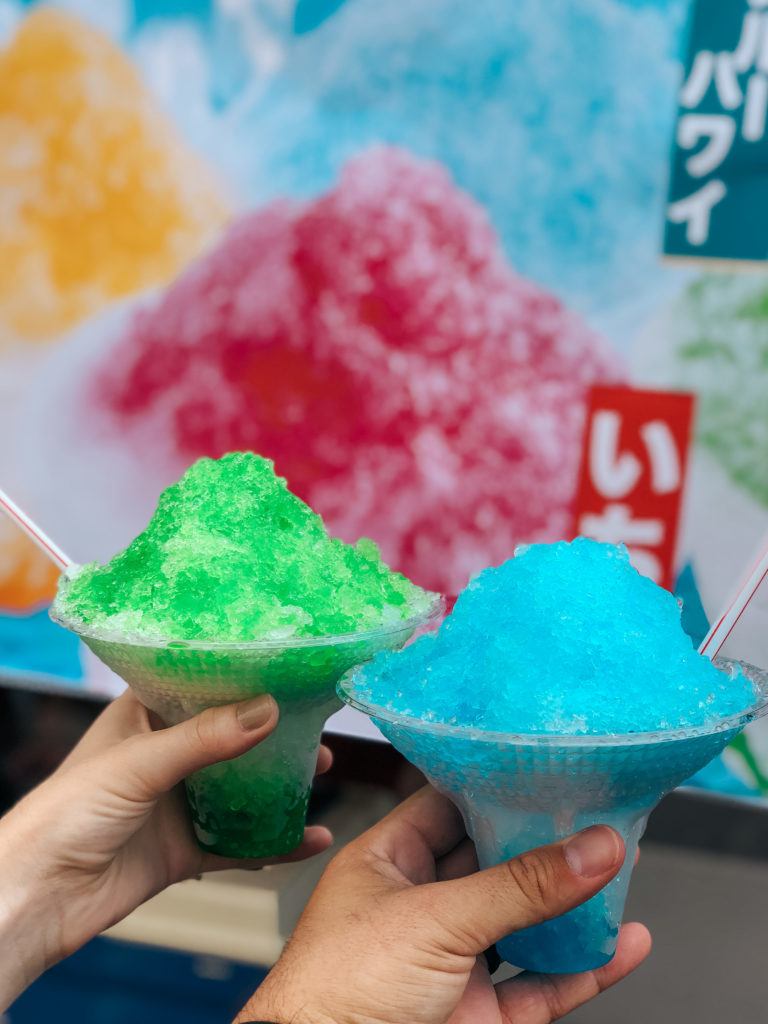
Baby Castella (ベビーカステラ)
These treats are minis of the popular Japanese sponge cake, castella. They are made by adding the batter to a pan with holes and turned quickly (like takoyaki). Dozens are then placed in a bag and served warm. I think they tasted similar to mini pancakes!
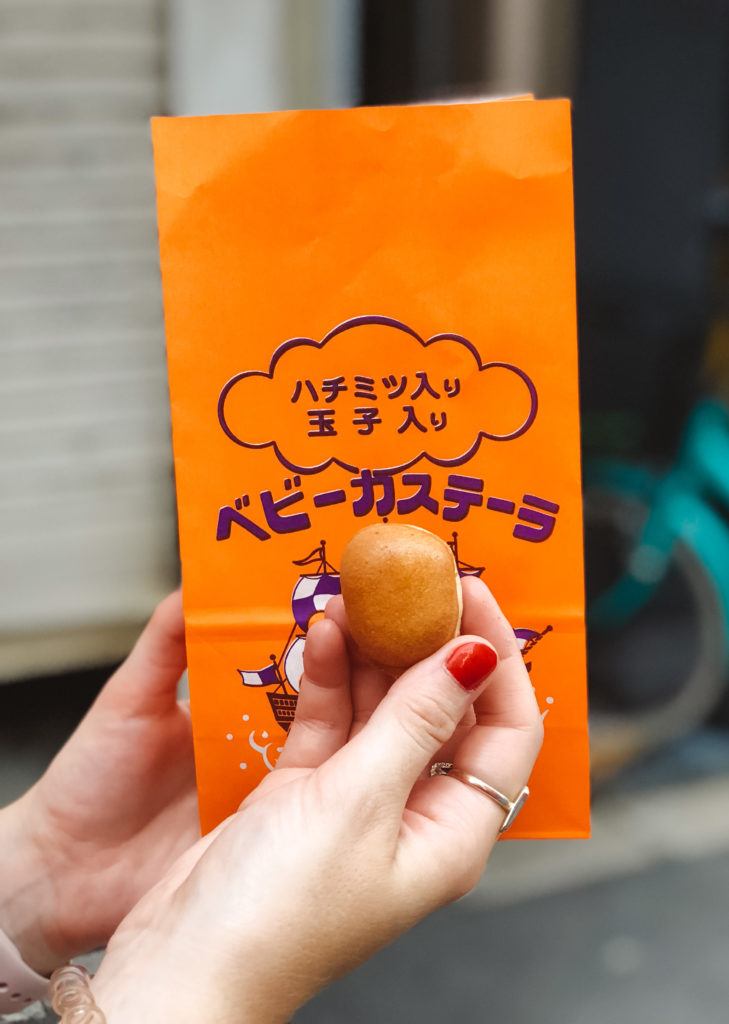
Mitarashi Dango (みたらし団子)
Mitarashi dango is a more sweet and salty type of dango (sweet rice cake). It is covered with a sticky sauce made from shoyu (soy sauce), sugar, and starch and is lightly grilled.
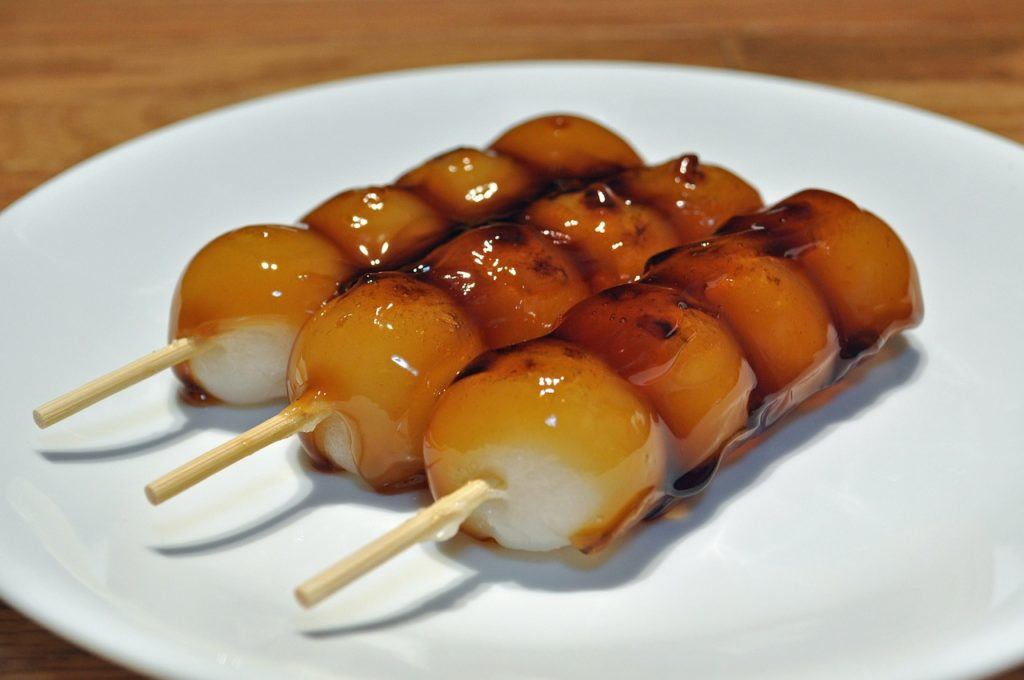
Choco Banana (チョコバナナ)
Chocolate-covered bananas can be found at many different food stands at Japanese festivals. They are usually coated with chocolate of various colors and sprinkles.
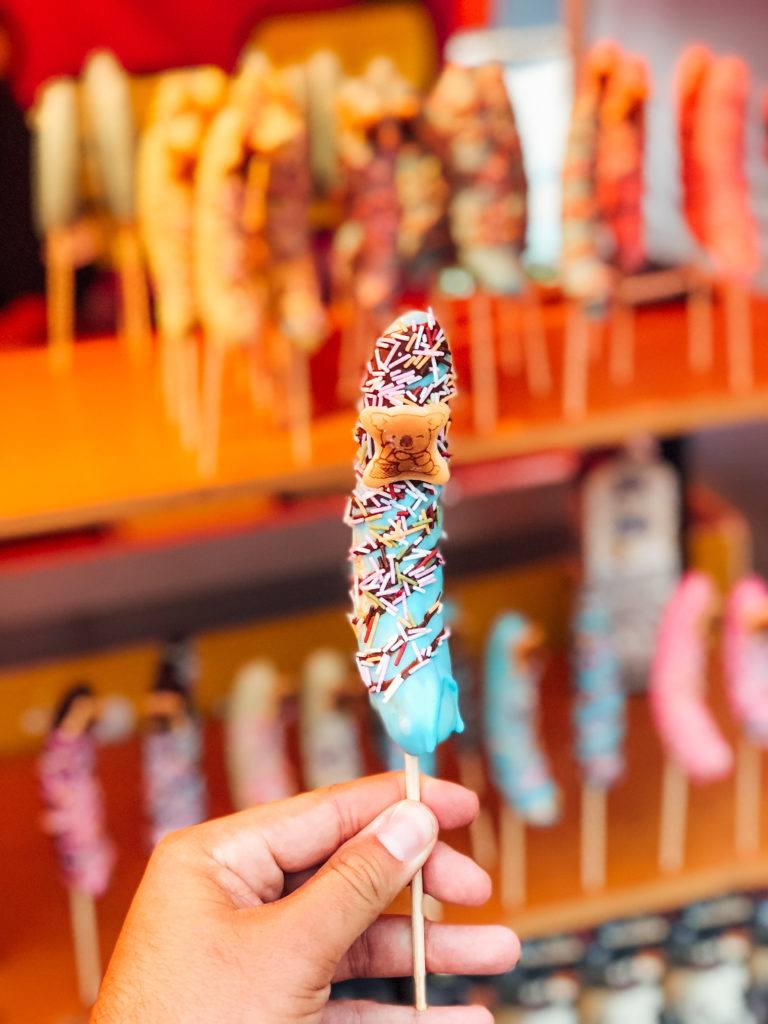
Candy Apple (リンゴあめ)
Candy apples and other candied fruits like plums, cherries, and strawberries are a very popular sweet. There are different kinds of candy coatings too!

Amezaiku (飴細工)
Amezaiku is a type of decorative candy. Simple designs can be found all over festivals. I got a cute one that looked like Totoro!

List of Summer Festivals in Japan
Now, the moment you’ve been waiting for! Here is a complete list of the most popular summer festivals in Japan. We have arranged them by date starting in mid-May and ending in late August. All of these summer matsuri are exceptional and unique so no matter which one(s) you’re able to visit, you’re sure to enjoy it!
Kanda Matsuri (神田祭) & Sanno Matsuri (山王祭)
Where: Tokyo, Japan
When: Kanda Matsuri, May 15 – odd-numbered years, Sanno Matsuri, Mid-June – even-numbered years
Kanda Matsuri began during the Edo Period of Japan (1603-1867). It was originally a celebration of prosperity under the new rule of the Tokugawa shogun. But it has since become a festival to celebrate wealth and good fortune.
The festival’s host shrine is Kanda Myojin which houses three deities: Daikokuten – the god of harvest and marriage, Ebisu – the god of businessmen and fishermen, and a feudal lord of the 10th century named Taira Masakado who was deified for this shrine.
The night before the main procession the deities’ spirits are invited to leave Kanda Myojin Shrine and travel to one of the three mikoshi (portable shrine) designated for them so they can prance through the streets of Kanda, Nihonbashi, Otemachi and Akihabara the next morning.
On Saturday the parade begins promptly at 8am and lasts until 7pm when the mikoshi is returned to the shrine until Sunday when the festivities continue. Along with those carrying the mikoshi, there are also a number of other participants dressed in traditional costumes, men wearing samurai uniforms, and priests who participate and travel by horse for the parade! There are also a number of musicians and dancers for viewer entertainment.
Now many of the events at Sanno Matsuri (山王祭) are similar to Kanda Matsuri but there are a few differences. Sanno Matsuri is hosted opposite years of Kanda Matsuri and begins at Hie Shrine which enshrines the guardian deity of Tokyo who is the protector of the city.
Hakata Gion Yamakasa (博多祇園山笠)
Where: Fukuoka, Japan
When: July 10-15
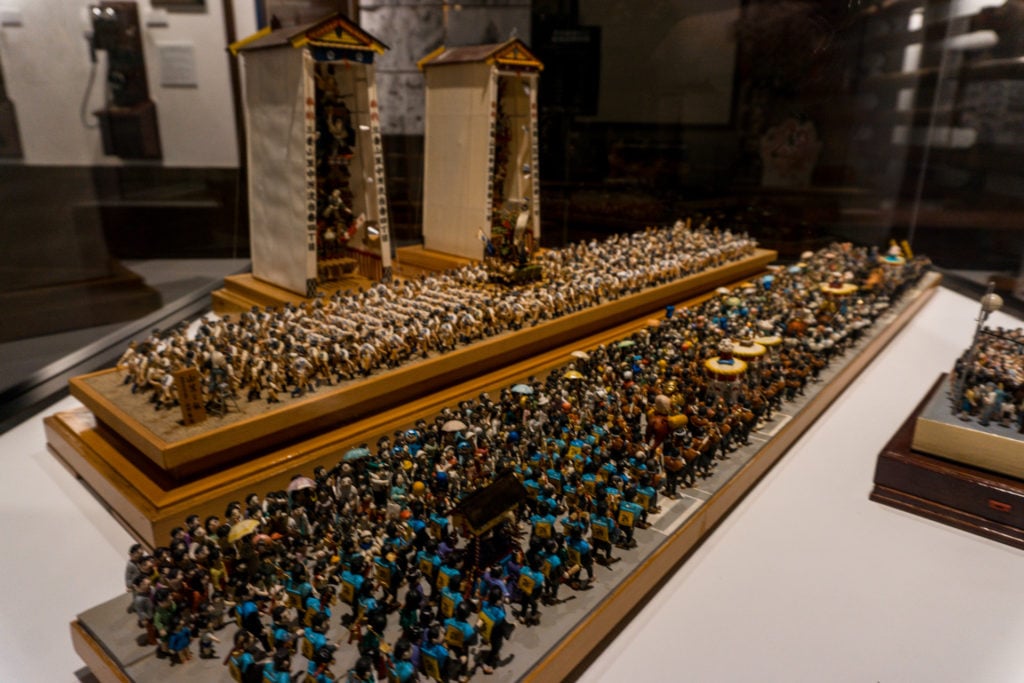
The next summer festival in Japan we’re diving into is Hakata Gion Yamakasa. This is a festival that we, unfortunately, didn’t get to attend even though we were living in Japan during this time. The reason we didn’t attend it was mostly due to the timing with Gion Matsuri, the next festival on our list – but MAN, we’d love to go back for it.
Hakata Gion Yamakasa is by far one of the most intriguing summer festivals in Japan. It brings in nearly 1 million tourists each year and dates back almost 800 years. It was started during a time of widespread illness as a religious cleansing ceremony.
In this festival, there are two kinds of elaborately decorated floats called kakiyama (the smaller floats) and kazariyama (the larger floats). The smaller, kakiyama floats are raced through the streets of Hakata by local residents split into teams. The larger, kazariyama floats were once raced as well but are now created for decorative display all over Fukuoka.
At 1am on July 15, the teams begin to line up for the race by Kushida Shrine, the host shrine for the festival. The whole city is awake and waiting too so they can see the events take place along the 3 mile (5-kilometer) path that the race takes place on!
Then at 4:59am, drums signal the start of the race and the first team crosses the starting line with a burst of momentum to move the heavy float – it is exhilarating to watch, even on video! It is followed by the others in five-minute intervals. The race typically takes each team about 30 minutes to complete so it usually ends around 6am.
Gion Matsuri (祇園祭)
Where: Kyoto, Japan
When: July 14-17
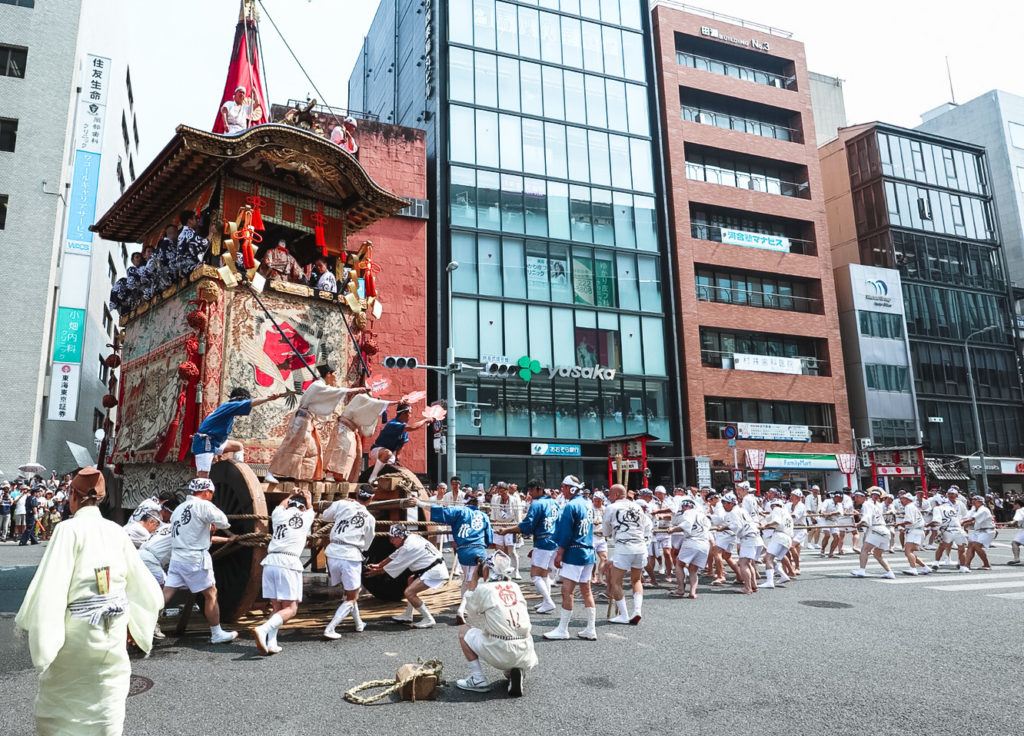
Gion Matsuri is the festival for Yasaka Shrine in Kyoto, Japan. It is one of the oldest summer matsuri and probably the most famous. The history of this summer festival dates back to 869 when it started as a religious cleansing ceremony for the gods during the midst of a plague.
At this festival, there are two different styles of floats called Yamaboko that are built each year with large timber beams and rope decorations. These 23 yama floats and 10 hoko floats are paraded through the streets of Gion on the day of the main parade.
Of the two floats, the hoko floats are the largest at 82 feet (25 meters) tall and weighing up to 12 tons! They are pulled on the streets on huge wooden wheels by some of the participants involved in the parade.
During the three days prior to the parade, there are evening street parties known as Yoiyama where visitors can admire the floats while enjoying street food and playing carnival games. The floats are beautifully illuminated these evenings!
On July 17th the first float procession begins at 9am and lasts until around 1pm. The parade path follows a 1.8 mile (3 km) route along Shijo, Kawaramachi, and Oike streets in Kyoto. All participants are dressed in traditional costumes depending on their role in the festival.
Since Gion Matsuri is the most famous summer festival in Japan, it is also one of the most crowded. You can witness the float procession from the sidewalks or you can also pay for seating in front of the city hall for 3,180 yen (just make sure you book in advance!). I suggest making sure you get a spot on the corners of the streets to watch these massive floats turn!
Tenjin Matsuri (天神祭)
Where: Osaka, Japan
When: July 24 & 25
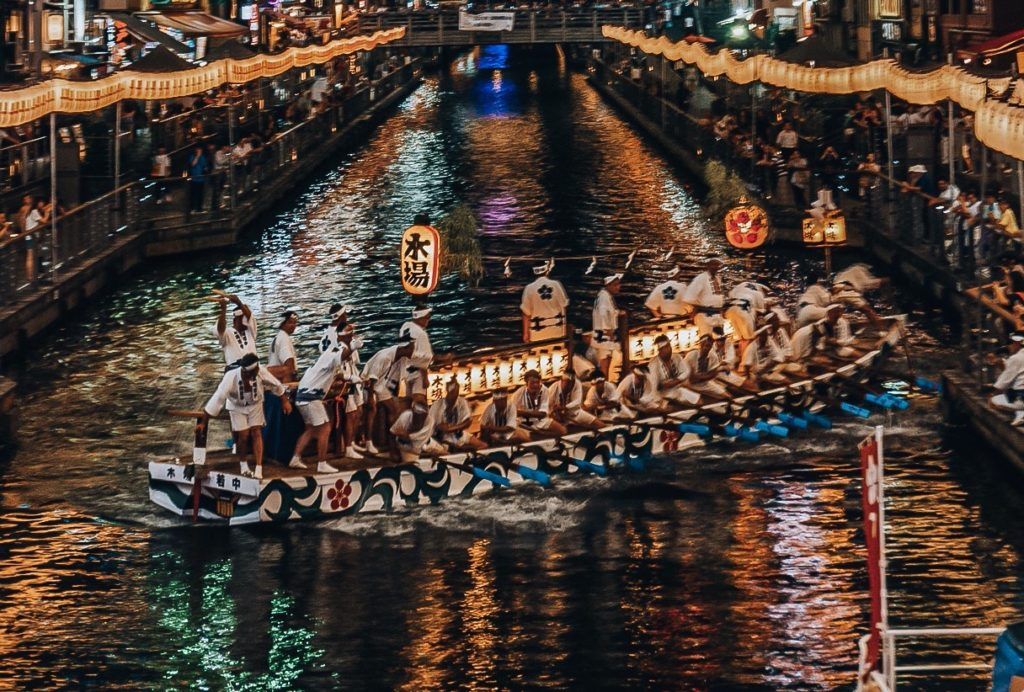
Tenjin Matsuri is known as the festival of the Tenmangu Shrine and honors the deity Sugawara Michizane, the god of learning.
The festivities for Tenjin Matsuri begin on July 24, when an invitation is called for the god to leave the shrine and enter a smaller, portable shrine that is paraded around the city. After this ceremony, there are usually traditional dances, street food stands, and festival games by the shrine.
On July 25, the second day of the festival, the main events begin at 3:30pm starting with a land procession of the portable shrines from Tenmangu Shrine to the Okawa River. These shrines are carried by local residents who are participating in the festival.
Around 6pm, or once the festival participants with the shrines reach the Okawa River, they are loaded into ceremonial boats located on the river. They are then paraded up and down the river while performing songs on taiko drums or demonstrating their rowing skills – some boats even have bonfires inside them!
Along the river are thousands of street food stalls, games, and crafts where you can enjoy something to eat while waiting for the exciting end of the main event – a fireworks display!
The fireworks display at Tenjin Matsuri is one of Japan’s most famous and starts around 7:30pm and ends around 9pm. After the fireworks are over, participants disembark the boats and make their way back to the shrine ending the festival.
Nagaoka Hanabi Matsuri (長岡まつり大花火大会)
Where: Niigata, Japan
When: August 1-3 (fireworks on August 2 & 3)
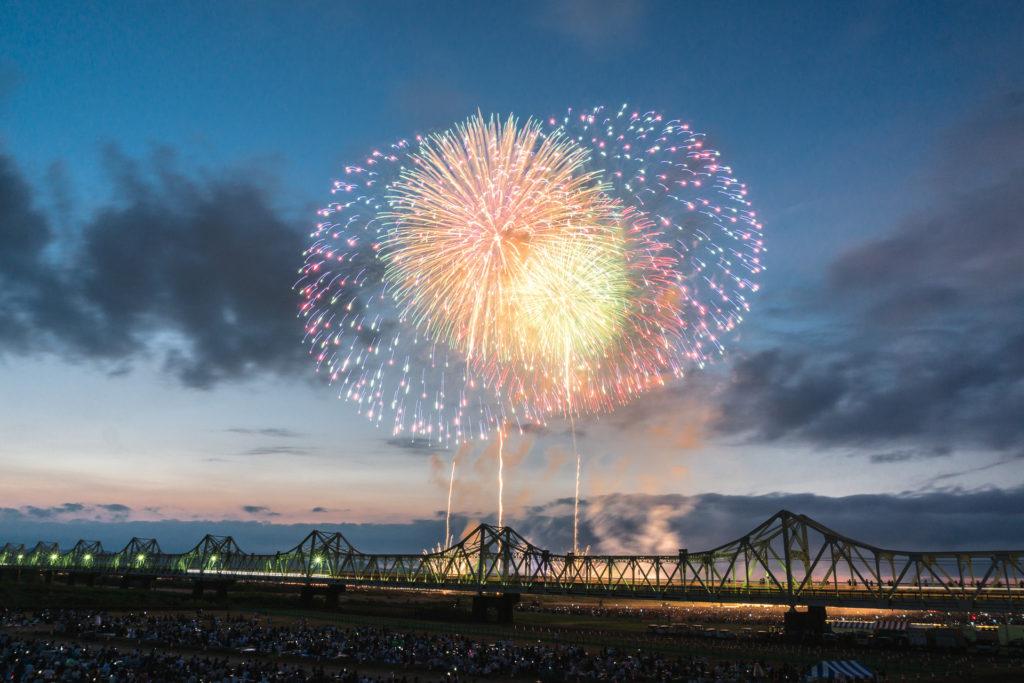
If you thought the fireworks show at Tenjin Matsuri in Osaka was grand, just wait until you hear about this Japanese summer festival! Nagaoka Hanabi Matsuri started in 1946 as an event dedicated to the 1,500 people who died in this city during a bombing in World War II.
Now, this annual event brings in around half a million people each year to experience one of the top three fireworks festivals in Japan.
These fireworks are hands down the most remarkable fireworks I’ve ever experienced. With each burst, they fill the sky with glitter. Even though you are seated far away you can even feel slight warmth from the light and the sound vibrates in your chest.
The way that they pair the music that plays through the speakers mixed with the beautiful bursts of colorful fireworks is also emotionally moving, especially given the history behind this event.
Akita Kanto Matsuri (竿燈まつり)
Where: Akita City, Japan
When: August 3-6
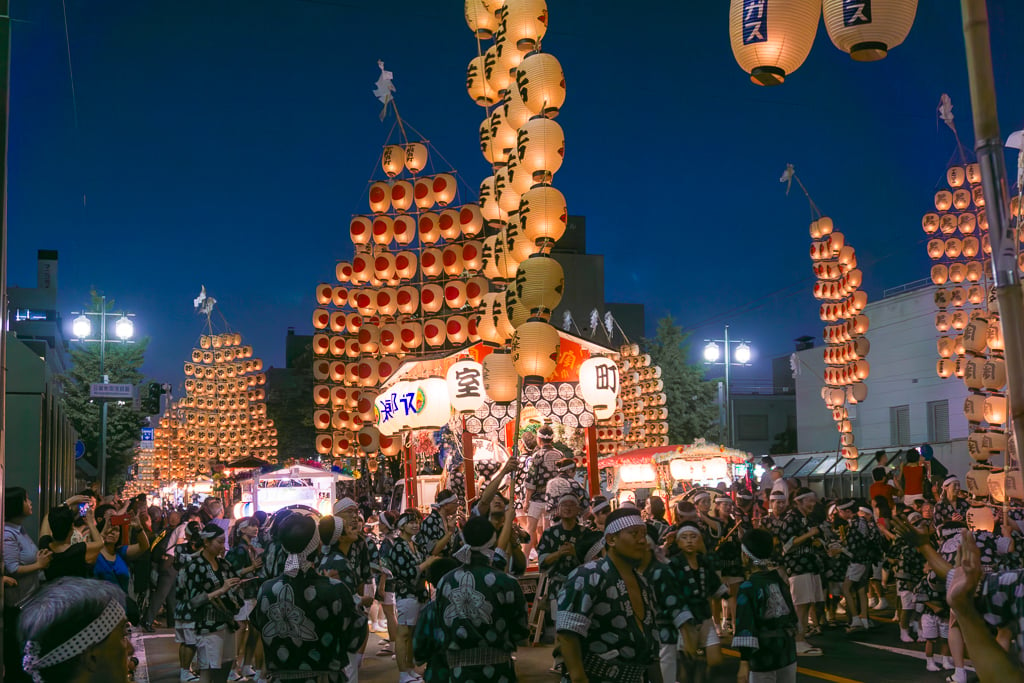
As you have probably figured out, all of the summer festivals in Japan have their own unique concept but typically center around a religious aspect or specific event. Akita Kanto Matsuri is another interesting festival that started in the 17th century as a dedication and prayer for a good harvest in the upcoming year.
During this festival, performers balance extremely large kanto (bamboo poles) with rows of lit paper lanterns. These kanto typically range in size, the largest having 46 paper lanterns with lit candles inside. These specific kanto are 40 feet (12 meters) tall and weigh 110 lbs (50 kg).
As the evening events begin, 250 kanto poles and hundreds of performers line the street. Once the signal is given, the performers hoist up the kanto with one big push all at the same time. They then make their way down the street taking turns carrying the kanto for the duration of the event.
Around them, participants begin chanting “dokkoisho, dokkoisho” (which means “heave-ho!”) to the beat of the drums and wood instruments. As the chanting continues, the performers place extensions on the pole one at a time until they are at maximum height. As this happens, they continue to show off their balancing skills by placing the pole on their forehead, hip, shoulder or in the palm of one hand!
After the main performance is over, you can meet with the performers to talk, take photos, or try hoisting up one of the kanto yourself! But while they make it look easy, be careful! They’re extremely heavy. 🙂
Aomori Nebuta Matsuri (ねぶた祭)
Where: Aomori City, Japan
When: August 2-7
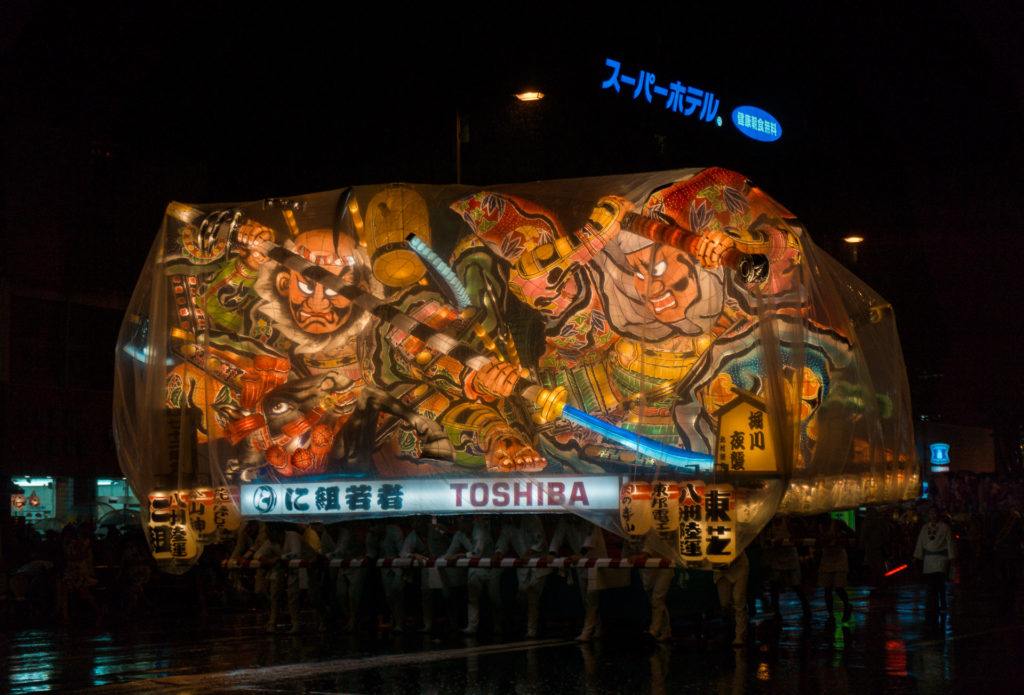
Aomori Nebuta Matsuri is perhaps the most intricately beautiful of the summer festivals that we visited. Each year, around 24 enormous floats are built by local residents with wireframing and painted washi paper.
Typically, the floats depict a notable Japanese folktale, historical figures, or gods. They range in size but can be up to 16 ft (5 m) tall and 30 ft (9 m) wide – almost taking up the width of the street that is paraded down!
On the evenings of the festival, the floats are wheeled onto the streets of downtown Aomori. As the parade procession begins, the illuminated floats are pushed down the streets moving back and forth toward the crowd to create an entertaining display. Alongside the floats are a procession of taiko drummers, flute and cymbal places, and hundreds of dancers dressed in what’s known as a haneto costume.
On the last day of the festival, some of the floats are put on boats and rowed around the bay right before the events end with a two-hour fireworks display! If you aren’t able to visit Aomori Nebuta Matsuri, the previous years’ floats are on display in the Nebuta Matsuri Museum also located in Aomori City.
Sendai Tanabata Matsuri (仙台七夕まつり)
Where: Sendai, Japan
When: August 6-8

Tanabata, also known as star festivals, are held all over Japan typically on the 7th day of the 7th month. However, Sendai Tanabata Matsuri is one of the largest Tanabata festivals attracting nearly 2 million visitors each year. The main events take place on August 6-8 in correlation with the old Chinese calendar.
Tanabata festivals celebrate the meeting of the deities Orihime and Hikoboshi (represented by the stars Vega and Altair). Legend says, the Milky Way separates the two lovers but once a year on the 7th day of the 7th lunar month they can meet again.
On August 5, the night before the festival begins, there is a fireworks show alongside the Hirosegawa River to kick off the festival. After, you’ll begin seeing what draws most people to this Tanabata festival, the streamers!
The main feature of Sendai Tanabata is the large colorful streamers of washi paper and bamboo that hang high from the ceilings of shopping arcades around the city. Most of the streamers are around 10-20 ft (3-5 m) in length and are created by local schools and shops.
In some of the parks and streets nearby to the shopping arcades, there are also stages set up for performances, with live music, dance, and other entertainment next to a bunch of food vendors.
Another display unique to this festival is the bamboo trees that are filled with paper decorations and pieces of paper. You might not think it’s much at first glance but this is an incredibly important part of any Tanabata festival. Visitors write down their wishes on tanzaku (colored paper strips) and hang them on the tree in hopes they will come true.
Obon Matsuri (お盆)
Where: All areas of Japan
When: August 13-15
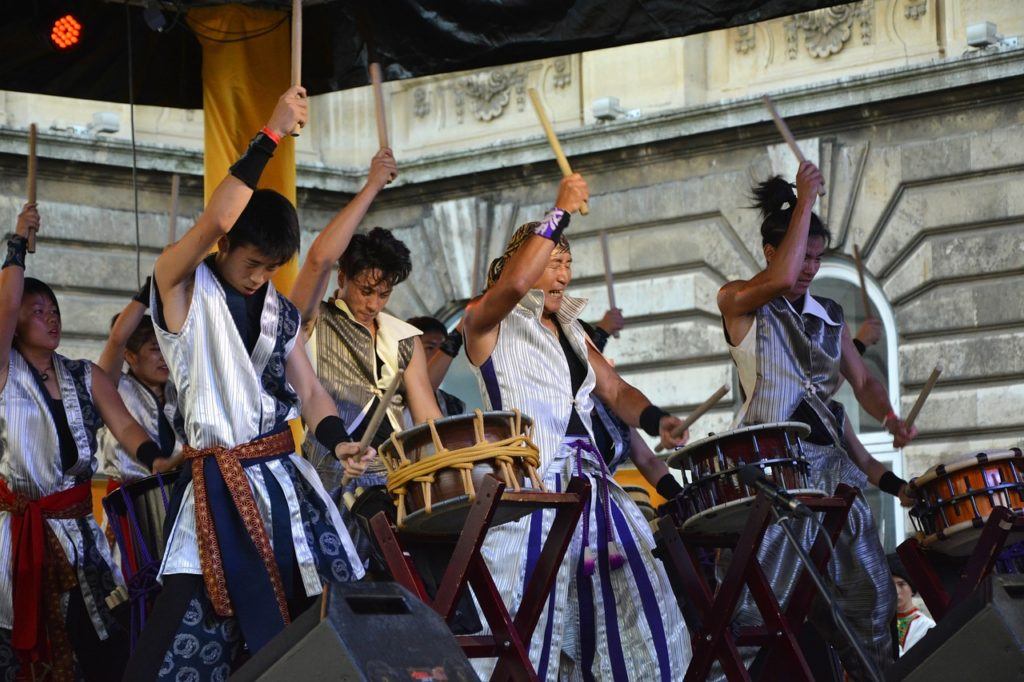
Obon is one of the most important annual traditions in Japan. It is a Buddhist festival that was created to honor one’s ancestors who have passed. Each year, during Obon, it is said that ancestors’ spirits return to the world so they can visit their relatives.
In order to prepare for the spirit’s arrival, chochin (paper lanterns) are hung and lit in homes or at the entrance of homes. During this time, graves are often visited and relatives of the deceased present offerings at the butsudan (altars) set up in their homes. These offerings usually include food (usually the deceased favorites) and gifts.
Once the festival begins, there are a number of other traditions that take place. One of the largest traditions is called Bon Odori which is a traditional folk dance that varies by region but regardless the basis is still the same. During Bon Odori there are typically taiko drummers who keep rhythm alongside dancers who wear Japanese summer kimonos known as yukata.
There are also other events that take place with locals from the community and nearby schools. Some of the events we witnessed were dancing, singing, and other taiko drum performances from a nearby school.
On the last day of Obon, some people put toro nagashi (floating lanterns) in rivers or the sea to help guide the spirits back to their homes.
When we attended Obon we happened to be in the Hokkaido and Tohoku regions of Japan, where many of Logan’s family members live or are buried. This obviously made the planned events more sentimental to Logan when we visited his grandmother’s hometown of Otaru.
Harajuku Omotesando Genki Matsuri Super Yosakoi (原宿表参道元氣祭 スーパーよさこい)
Where: Omotesando Street in Tokyo, Japan
When: Late August
Times: Saturday 10am-8pm, Sunday 10am-5:30pm
Harajuku Omotesando Super Yosakoi is one of the biggest events in Tokyo bringing in around 1 million visitors annually, but it is also one of the newer events originally starting in 1954 in the Kochi Prefecture. It was originally created as a mood booster to the region after suffering economic hardships due to war.
We honestly stumbled across this festival at random when we happened to be in Harajuku on the first day it was happening. We were both immediately intrigued by the loudness and colorful displays, unlike any other festival we had been to in Japan.
To give a little more context, Harajuku Omotesando Super Yosakoi is a 2-day street dance event, featuring the traditional Yosakoi dance that uses naruko, wooden clapping instruments which were once used to scare birds away from crops.
Around 100 teams with over 6,000 dancers from all over Japan (and some in other parts of the world!) participate in the event and perform exciting dances in wildly colorful costumes at Harajuku/Omotesando area during the two days of the event.
Which of these summer festivals in Japan would you want to visit most?
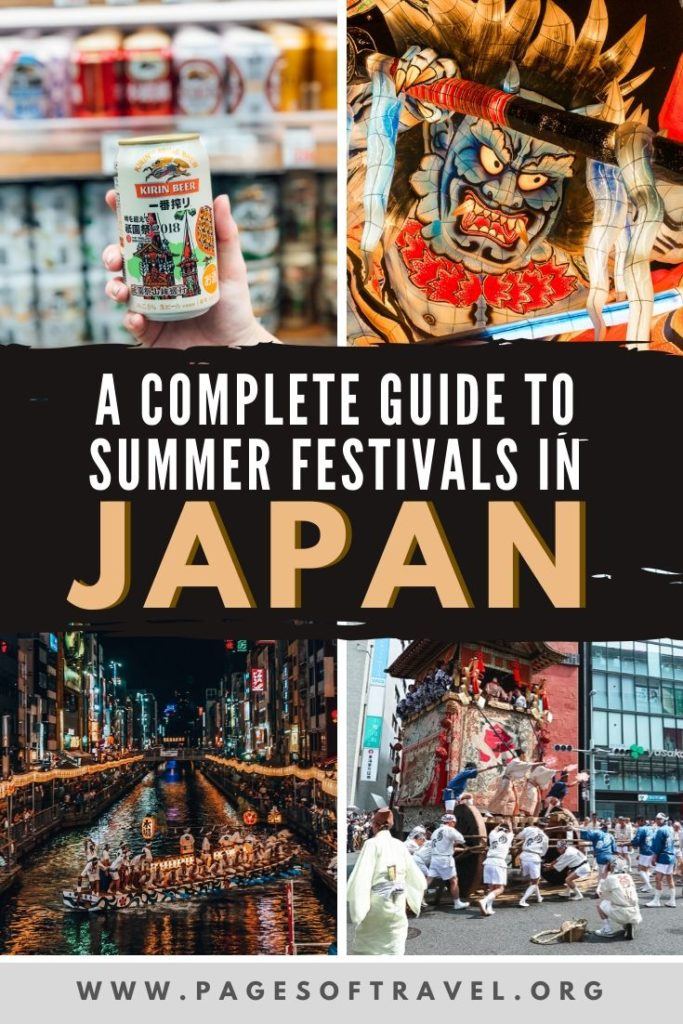
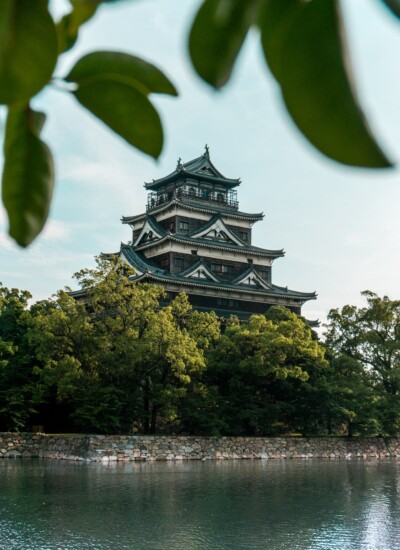


Leave A Reply!